#ERICH LUDENDORFF
Explore tagged Tumblr posts
Text
" Quando si guardano indietro, alla ricerca di un’àncora cui vincolare la festa nazionale – una presa della Bastiglia, una Dichiarazione americana d’indipendenza –, tutti i regimi tedeschi si snervano in un sentimento d’inferiorità, alla vana ricerca di un evento luminoso cui sacrificare con cadenza annuale. E non lo trovano. Persino la caduta del Muro non funzionerà. Il 9 novembre è giorno sfortunato nella storia tedesca. Coincide con la resa di Compiègne alla Francia (1918), con il fallito “putsch della birreria” ordito a Monaco da Hitler e Ludendorff (1923), con la notte dei cristalli (1938), prodromo dello sterminio degli ebrei. Si ripiegherà infine sul 3 ottobre, decretato Giorno dell’Unità Tedesca. Atto amministrativo che non scalderà i cuori germanici. Un popolo senza mito non può farsi davvero nazione. La Bundesrepublik era e resta Stato a nazionalità limitata. Per molti un salutare trapasso dal militarismo prussiano al post-nazionalismo europeisticamente corretto. Ma non per tutti. E comunque per sempre meno. "
Lucio Caracciolo, La pace è finita. Così ricomincia la storia in Europa, Feltrinelli (collana Varia), novembre 2022. [Libro elettronico]
#letture#scritti saggistici#saggistica#saggi brevi#geopolitica#Lucio Caracciolo#leggere#citazioni#libri#La pace è finita#DDR#storia del XX secoloa#sovranità#Germania#Bundesrepublik#Deutschland#Cortina di ferro#RDT#presa della Bastiglia#Dichiarazione d’indipendenza americana#muro di Berlino#1989#resa di Compiègne#Grande guerra#prima guerra mondiale#putsch di Monaco#Erich Ludendorff#notte dei cristalli#Giorno dell’Unità Tedesca#miti nazionali
6 notes
·
View notes
Video
ERICH LUDENDORFF-PINTURA-ARTE-ALEMANIA-GENERAL-EJERCITO-PRIMERA GUERRA MUNDIAL-PERSONAJES-PRUSIA-HISTORIA-RETRATOS-ARTISTA-PINTOR-ERNEST DESCALS- por Ernest Descals Por Flickr: ERICH LUDENDORFF-PINTURA-ARTE-ALEMANIA-GENERAL-EJERCITO-PRIMERA GUERRA MUNDIAL-PERSONAJES-PRUSIA-HISTORIA-RETRATOS-ARTISTA-PINTOR-ERNEST DESCALS- Personajes representativos del militarismo prusiano en la historia del Reich de Alemania en la PRIMERA GUERRA MUNDIAL, retrato del general ERICH LUDENDORFF, uno los hombres de confianza del Kaiser Wilhelm II, vencedor de las batallas de Lieja en el frente occidental y de Tannenberg en el frente oriental. Uniformes y complementos del Ejército Imperial Alemán con expresiones humanas de mucho carácter. Pintura de retratos del artista pintor Ernest Descals sobre papel de 50 x 70 centímetros.
#PRIMERA GUERRA MUNDIAL#WW1#FIRST WORLD WAR#PERSONAJES HISTORICOS#HISTORIA#HISTORY#CHARACTERS#ERICH LUDENDORFF#PRUSIA#PRUSIANOS#ALEMANIA#GERMANY#REICH#KAISER#WILHEM II#GENERAL#GENERALES#EJERCITO ALEMAN#GERMAN ARMY#VICTORIAS#TANNENBERG#LIEJA#ART#ARTWORK#ARTE#PLASTICA#FINE ART#PAINTINGS#PAINTERS#PAINTER
0 notes
Text
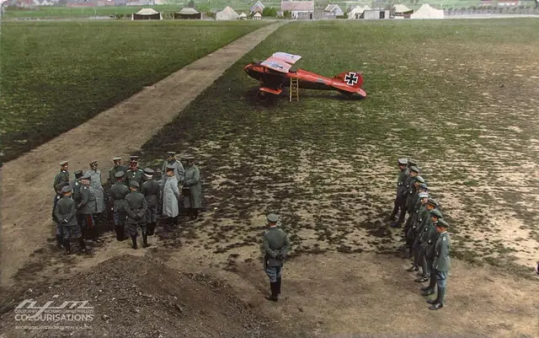
Colorized and original black and white of General Erich Ludendorff's visit to the aerodrome at Markebeke. Richthofen's all red Albatros D.V (2059/17) is prominently displayed in the background. 19 Aug 1917.
33 notes
·
View notes
Text
Der 09. November - Der Tag der Deutschen
Kaum ein anderer Tag vereint so viele, für unser Land historisch bedeutsame Ereignisse wie dieser
09.11.1848 - standrechtliche Hinrichtung von Robert Blum
Der republikanische Abgeordnete der Frankfurter Nationalversammlung wird, obgleich er unter parlamentarischer Immunität steht, bei Wien erschossen. Seine Hinrichtung gilt als Symbol für die Niederschlagung der Deutsche Revolution 1848/1849 durch die reaktionären herrschenden Kreise.
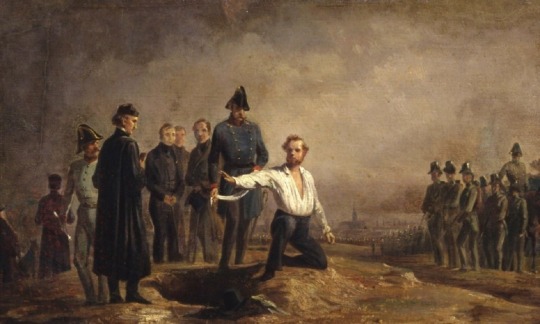
09.11.1918 - die Proklamation der Republik in Berlin
Während der Novemberrevolution 1918 ruft von einem Fenster des Reichstagsgebäudes aus der sozialdemokratische Abgeordnete Philipp Scheidemann die “deutsche Republik” aus. Drei Stunden später proklamiert der Sozialist Karl Liebknecht vor dem Berliner Stadtschloss die “Freie Sozialistische Republik Deutschland”.
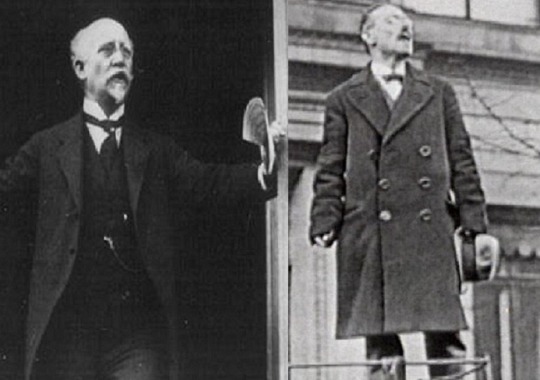
09.11.1923 - Hitler-Ludendorff-Putsch in München
In München putscht ein bis dahin unbekannter rechtsradikaler Demagoge namens Adolf Hitler im Verein mit dem reaktionären General Erich Ludendorff gegen die Weimarer Republik. Sein Versuch, die rechtsstaatliche Ordnung analog zu Benito Mussolini in Italien durch einen “Marsch auf Berlin” zu beseitigen, scheitert vor der Feldherrenhalle am Odeonsplatz durch den bewaffneten Einsatz der bayrischen Landespolizei. Vier Polizisten, ein unbeteiligter Passant und fünfzehn Putschisten sterben. Erstmalig werden die Nationalsozialisten einer breiteren Öffentlichkeit bekannt.
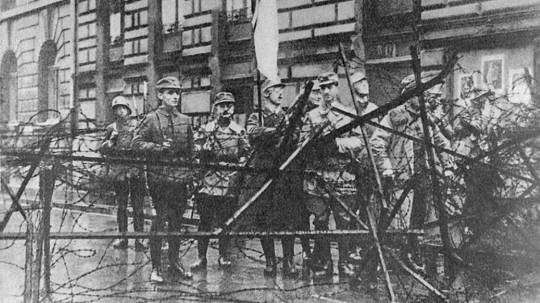
09.11.1938 - Reichspogromnacht
Die Novemberpogrome mit etwa 400 Todesopfern, 1.406 zerstörten Synagogen und jüdischen Gebetsstuben markieren den endgültigen Übergang von der gesellschaftlichen Diskriminierung der jüdischen Bürger im nationalsozialistischen Deutschland zur offenen Gewaltanwendung, die schließlich im Holocaust endete.
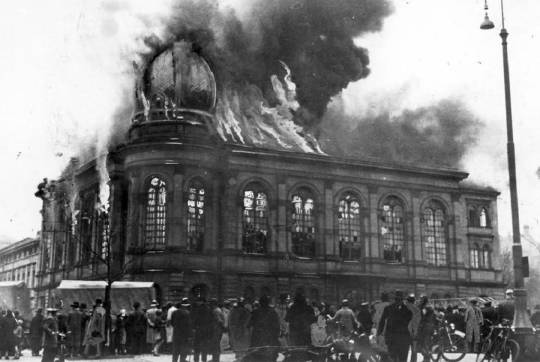
09.11.1989 Der Fall der Berliner Mauer
Auf einer bis dahin eher langweilig verlaufenen Pressekonferenz verliest das SED-Politbüromitglied Günter Schabowski gegen 7 Uhr abends auf Nachfrage des italienischen Journalisten Riccardo Ehrmann einen neuen Entwurf über Reisemöglichkeiten für DDR-Bürger.
Der etwas umständliche Wortlaut ist folgender: “Privatreisen nach dem Ausland können ohne Vorliegen von Voraussetzungen (Reiseanlässe und Verwandtschaftsverhältnisse) beantragt werden. Die Genehmigungen werden kurzfristig erteilt. Die zuständigen Abteilungen Pass- und Meldewesen der der Volkspolizeikreisämter in der DDR sind angewiesen, Visa zur ständigen Ausreise unverzüglich zu erteilen, ohne dass dafür noch geltende Voraussetzungen für eine ständige Ausreise vorliegen müssen. Ständige Ausreisen können über alle Grenzübergangsstellen der DDR zur BRD erfolgen.”
Der Reporter der “Bild”-Zeitung Peter Brinkmann fragt nach, ab wann dies in Kraft trete. Schabowski, der über den genauen Inhalt der neuen Regelung, die eine Sperrfrist beinhaltet, nicht informiert ist, da er bei deren Beschlussfassung nicht anwesend war, antwortet daher: „Das tritt nach meiner Kenntnis – ist das sofort, unverzüglich.“
Während das Fernsehen der DDR in nüchternen Worten über den Fakt der neuen Reisemöglichkeiten informiert, ist für Hanns Joachim Friedrichs während seiner Moderation der “Tagesthemen” die historische Bedeutsamkeit sofort ersichtlich: “Die DDR hat mitgeteilt, dass ihre Grenzen ab sofort für jedermann geöffnet sind. Die Tore in der Mauer stehen weit offen.“
Im Laufe des Abends versammeln sich immer mehr Menschen vor den Berliner Grenzübergängen und verlangen friedlich aber lautstark das ihnen neu zustehende Recht.
Eine halbe Stunde vor Mitternacht befiehlt Oberstleutnant Harald Jäger, der zuständige Leiter der Grenzübergangsstelle Bornholmer Straße, von seinen Vorgesetzten mit einer Entscheidung allein gelassen und mit den Menschenmassen vor der Grenzübergangsstelle konfrontiert, eigenmächtig, sofort alle Kontrollen einzustellen und die Schlagbäume zu öffnen. Bis Mitternacht folgen alle weiteren Berliner Grenzübergangsstellen seinem Vorbild.
Kein einziger Schuss ist gefallen, niemand wurde verletzt. Tausende einander völlig fremde Menschen fallen sich weinend vor Glück in die Arme.
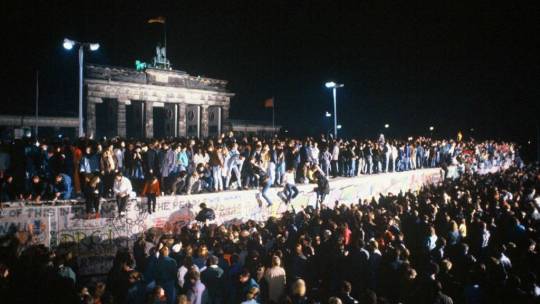
#deutschland#09.11.#deutsche geschichte#hinrichtung von robert blum#proklamation der republik#hitler-ludendorff-putsch#reichspogromnacht#mauerfall#germany#history
13 notes
·
View notes
Photo

Beer Hall Putsch
The Beer Hall Putsch or Munich Putsch was a failed attempt by the German National Socialist (Nazi) Party to seize power, first of the Bavarian and then the German federal government on 8-9 November 1923. The coup, led by Adolf Hitler (1889-1945), failed because other right-wing politicians, the police, and the army did not give their support.
The Nazis & the Crisis of 1923
Hitler became leader of the Munich-based NSDAP (National Socialist German Workers' Party) in 1921, taking over from Anton Drexler (1884-1942). The party was neither socialist nor at all interested in workers, but Hitler had chosen the name to give his ultra-nationalist party as wide an appeal as possible. Known as the Nazi Party, it was also vehemently anti-Semitic and against the German establishment, which it saw as the root of all ills, everything from the signing of the humiliating Treaty of Versailles which formally closed the First World War (1914-18) to hyperinflation. The Weimar Republic, as Germany was now known, was beset by weak coalition governments, which struggled to cope with a series of severe post-war challenges. By 1923, the Nazi Party had over 55,000 members, although this was much fewer than the Social Democratic Party, for example, which had 1.2 million members.
In the summer of 1923, the German government was in the middle of yet another crisis. France had invaded parts of the heavily industrialised Ruhr in western Germany in order to force the country to make good on its obligations to pay France war reparations. The government declared a state of emergency, and the army was given chief executive power. In Munich, the leader of the local government, Gustav Ritter von Kahr (1862-1934), the local army chief, and the chief of the police force were all given extraordinary powers to deal with the crisis. All were right-wing in political orientation, and Hitler saw this as an opportunity to take power, or, even better, to force an invitation to take power from what he considered like-minded politicians and army figures. Hitler ultimately intended to march on Berlin, much like the Italian fascist dictator Benito Mussolini (1883-1945) had marched on Rome to seize power in October 1922 (when the Italian king felt obliged to invite him to power). First, Hitler would deal with Munich, and his primary weapon would be his own paramilitary followers.
The Nazis used a paramilitary group, the SA (Sturmabteilung) stormtroopers, to frequently rough up the political opposition and generally strut about looking important. The SA, led by Ernst Röhm (1887-1934), even became too powerful for Hitler's liking, and so he created his own personal bodyguard called the Stosstrupp-Hitler (Hitler Shock Troop). Stosstrupp members included Julius Schreck (1898-1936), Joseph Berchtold (1897-1962), Ulrich Graf (1878-1950), Hermann Göring (1893-1946), and Rudolf Hess (1894-1987). Other key supporters of Hitler included General Erich Ludendorff (1865-1937), the WWI veteran who had found himself out of favour with the Weimar establishment ever since the armistice. Hitler hoped General Ludendorff would be a respectable figurehead for a Nazi-driven coup d'etat.
Nazi Gathering, Bürgerbräukeller
Bundesarchiv, Bild 146-1978-004-12A / Hoffmann, Heinrich (CC BY-SA)
Continue reading...
18 notes
·
View notes
Text
The firehose of falsehood, also known as firehosing, is a propaganda technique in which a large number of messages are broadcast rapidly, repetitively, and continuously over multiple channels (such as news and social media) without regard for truth or consistency. An outgrowth of Soviet propaganda techniques, the firehose of falsehood is a contemporary model for Russian propaganda under Russian President Vladimir Putin.
https://en.m.wikipedia.org/wiki/Firehose_of_falsehood
(fuck that guy 🇺🇦🖕)
+
A big lie (German: große Lüge) is a gross distortion or misrepresentation of the truth primarily used as a political propaganda technique.
The German expression was first used by Adolf Hitler in his book Mein Kampf (1925) to describe how people could be induced to believe so colossal a lie because they would not believe that someone "could have the impudence to distort the truth so infamously". Hitler claimed that the technique had been used by Jews to blame Germany's loss in World War I on German general Erich Ludendorff, who was a prominent nationalist political leader in the Weimar Republic.
According to historian Jeffrey Herf, the Nazis used the idea of the original big lie to turn sentiment against Jews and justify the Holocaust. Herf maintains that Nazi Germany's chief propagandist Joseph Goebbels and the Nazi Party actually used the big lie technique that they described – and that they used it to turn long-standing antisemitism in Europe into mass murder.
https://en.m.wikipedia.org/wiki/Big_lie
+
Brandolini's law, also known as the bullshit asymmetry principle, is an internet adage coined in 2013 by Alberto Brandolini, an Italian programmer, that emphasizes the effort of debunking misinformation, in comparison to the relative ease of creating it in the first place. The law states:
The amount of energy needed to refute bullshit is an order of magnitude bigger than that needed to produce it.
The rise of easy popularization of ideas through the internet has greatly increased the relevant examples, but the asymmetry principle itself has long been recognized.
https://en.m.wikipedia.org/wiki/Brandolini%27s_law
+
The Gish gallop is a rhetorical technique in which a person in a debate attempts to overwhelm an opponent by abandoning formal debating principles, providing an excessive number of arguments with no regard for the accuracy or strength of those arguments and that are impossible to address adequately in the time allotted to the opponent. Gish galloping prioritizes the quantity of the galloper's arguments at the expense of their quality.
https://en.m.wikipedia.org/wiki/Gish_gallop
+
The Overton window is the range of policies politically acceptable to the mainstream population at a given time. It is also known as the window of discourse.
https://en.m.wikipedia.org/wiki/Overton_window
#propaganda#logic#trumpisms#erasure#normalization#big lie#gish gallop#brandolini's law#firehosing#logical fallacies#overton window
17 notes
·
View notes
Text

Hi Guys!! :D Long Time no see! I hope things are going well for everyone , Sorry for long ass Hiatus I had for all these times, I Got very Busy on Real Life stuff and Shits and I Even Barely Remember to continuing My Works here.. But Anyways show must go on. Thank you to @chere-indolante For Inspiration. Let's Just say it was Upgrade to Her Work With More Detailed Gear and More Variety of Helmet LOL.
DOWNLOAD
The Imperial German Army or Deutsches Heer was the name given to the combined land and air forces (excluding the Marine-Fliegerabteilung maritime aviation formations of the Navy) of the German Empire. It was formed after the unification of Germany under Prussian leadership in 1871 and dissolved in 1919, after the defeat of the German Empire in World War I.
Tech Specs
Coverted From "Battlefield 1" Game, Credits belongs to Electronic Arms
This Particular Uniform Belongs to German Imperial During Early Stages of war (1914-1916) since Later Uniform is more simplified.
1 Color Swatch fot all Uniform
HQ Compactible.
Male Only
UNIFORMS
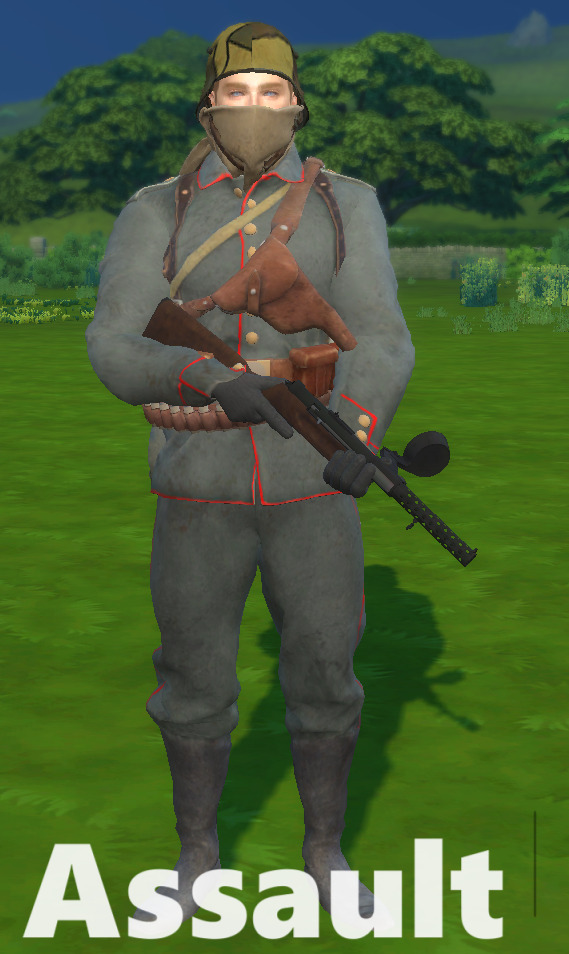

Assault - Wearing tunics, scarfs and Stalhelms (the front of the helmet camouflaged by a brow plate). With smaller details such as leather pistol holster on his chest and ammo pouches around their stomach. As with all classes, one can identify which gun a certain class is using, with players holding SMGs having their weapons at their shoulders while shotguns are held at their waist. Rifleman - Light Version of "Assault" Team, Wearing Exact configuration of said team. but only wearing A Rifle pouch. Most common sight in WWI German Front

Medic - Wearing tunics, with crutches and backpacks on the back and grey Stalhelms. With smaller details being ammo pouches around their stomach and water canteen on the right side. Medics hold their rifles generally at their shoulders, while running they point them downwards.

Support - Wearing trench coats, with heavy backpacks on their back and the Gaede Helmet. With smaller details being ammo pouches around their stomach with additional pouches underneath them, water canteen on their right side. Supports hold their Machine guns around their waist.
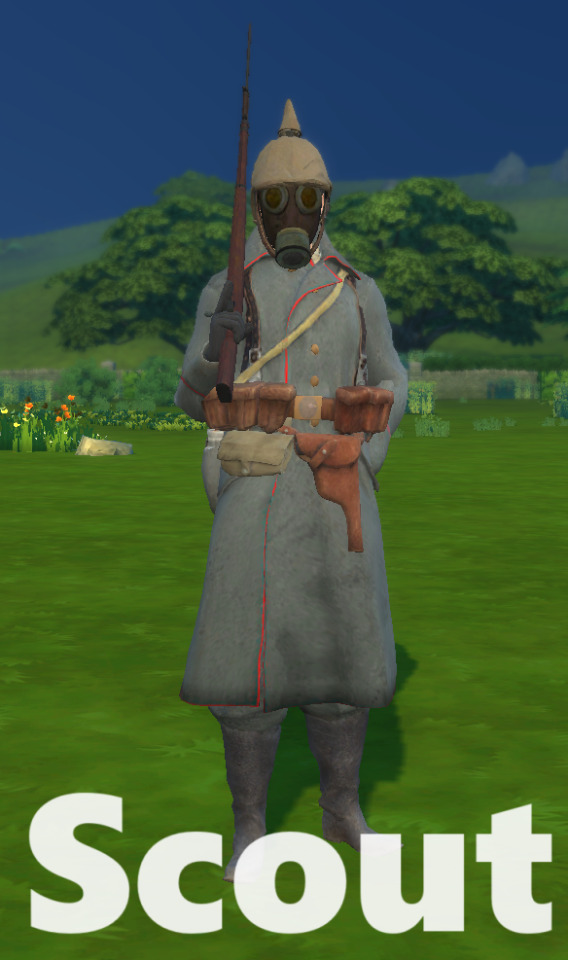
Scout - Wearing a trench coat and a Stalhelm. With smaller details being ammo pouches around their stomach with additional pouches underneath their right side and a sidearm holster on their left side. Snipers hold their rifles at the shoulder when walking and point them downward while running, similar to the Medic.
HELMET

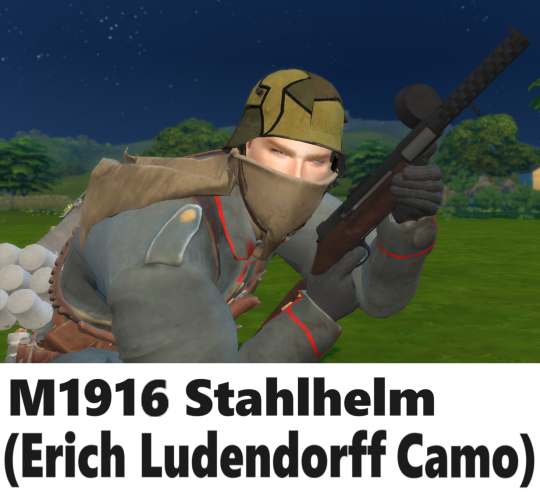
Stahlhelm M1916 - The Stahlhelm M1916 is an improved version of the German steel helmet introduced during World War I. Similar to the M1915, it features a distinctive design characterized by a rounded shape, a flared skirt, and a protruding visor. The M1916 model included enhancements to address issues with the earlier version, providing better protection to the wearer. It became a standard-issue helmet for German forces during World War I and continued to see use in various forms during subsequent conflicts. this is the Earliest version of Infamous German Stahlhelm that first fielded inside Imperial German Army. So don't Expect Better Protection like The Later model or WW2 Models. this also Include A German Tricolor Camouflage Designed by General Erich Ludendorff that Eventually Fielded in 1918.
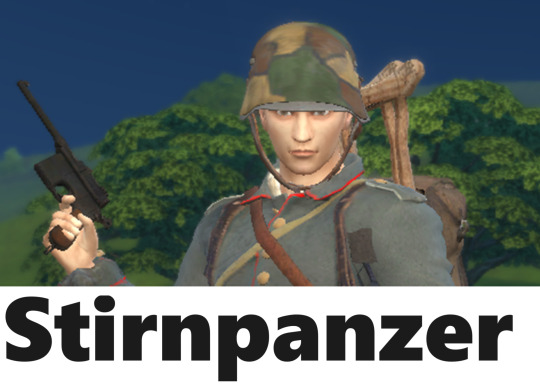
Stahlhelm Stirnpanzer - Due low Durability and Protection of M1916 Stahlhelm, German Ministry of War Issued Minor Upgrade. a The brow plate (Stirnpanzer), which was fitted to the front of the helmet to provide additional protection to the wearer. However, it's weight (2 kg) meant that it could only be worn for short periods. Approximately 50,000 brow plates were manufactured.
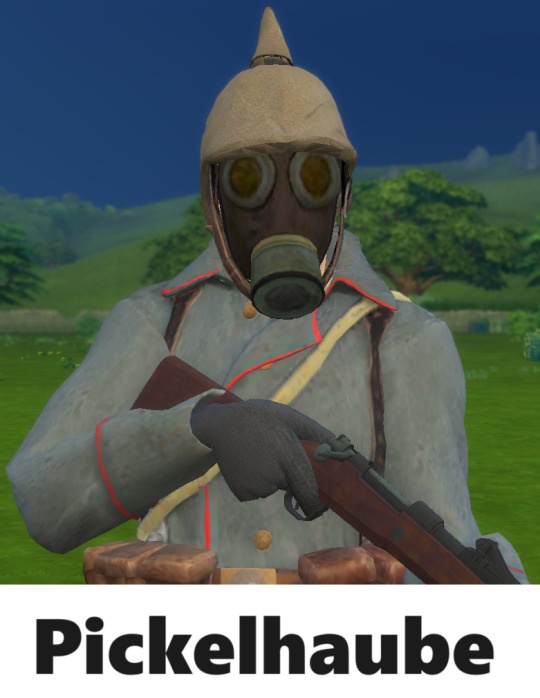
The Pickelhaube - The Iconic Helm From Prussian Era now Brought back to WWI Fronts. ickelhelm, is a spiked leather or metal helmet that was worn in the 19th and 20th centuries by Prussian and German soldiers of all ranks, firefighters and police. Although it is typically associated with the Prussian Army, which adopted it in 1842–43, the helmet was widely imitated by other armies during that period. It is still worn today as part of ceremonial wear in the militaries of certain countries, such as Sweden, Chile, and Colombia. This Particular Model is cloth helmet cover (Überzug) and For Cavalary use.
Gas Mask

During World War I, Chemical warfare was a significant and notorious aspect of World War I, and Germany played a key role in its early development. The Germans were the first to use chemical weapons on a large scale, introducing chlorine gas at the Second Battle of Ypres in 1915. This marked a disturbing escalation in warfare, as chemical agents were employed to harm and incapacitate enemy soldiers.
The use of chemical weapons by both sides, including mustard gas and phosgene, led to devastating consequences, causing widespread injuries and fatalities. The introduction of gas masks became essential for soldiers to protect themselves from these toxic substances. Despite the horrific nature of chemical warfare, it did not significantly alter the course of the conflict, and international agreements such as the Geneva Protocol of 1925 later sought to ban the use of chemical and biological weapons in warfare. Gummimaske 1915 - The Gummimaske 1915, also known as the GM 15, was a German gas mask used during World War I. It featured a rubber face mask with glass eyepieces and a filter canister containing layers of absorbent materials to protect against chemical warfare agents. The design aimed to provide effective protection for soldiers against the poisonous gases used on the battlefield during the war. The Gummimaske 1915 was an essential piece of equipment for troops exposed to the threat of gas attacks during this period.

GM-17 Ledershutzmaske was introduced in 1917 to combat chemical weapons used by both sides in the First World War. It replaced the GM15 mask. It was another iteration of the German gas mask used during World War I. Similar to its predecessor, the GM 15, it featured a rubber face mask with glass eyepieces and a filter canister. The design aimed to provide reliable protection against chemical warfare agents that were employed during the war. The GM 17 continued the improvements made in gas mask technology, enhancing the comfort and effectiveness of the mask for soldiers on the battlefield. Like other gas masks of the time, it played a crucial role in safeguarding soldiers against the threats posed by poisonous gases during World War I.
#the sims 4#the sims#the sims 4 custom content#ts4#ts4 cc#ts4military#the sims 4 military#the sim#the sims 4 cc#ts4cc#ww1 germany#ww1#ww1 history#world war 1#world war one#first world war#ts4 wwi#WW1 Uniform#tw war#timeless#ts4 military
48 notes
·
View notes
Text
Getting into necromancy so I can call up Erich von Ludendorff's soul from whatever hell he's in and read Gundam Wing slashfic I find-and-replaced his and Luigi Cadorna's names into at him. Maybe extend it further to Gundam SEED slashfic and add Ferdinand Foch and Douglas Haig's names to the mix.
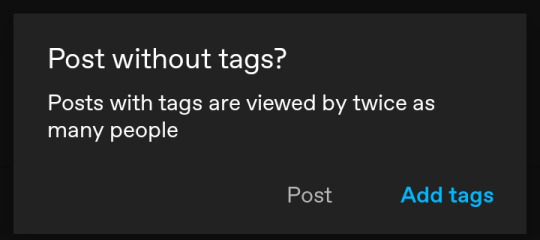
I take this as a dare, and I shan't be thought a coward.
16 notes
·
View notes
Text
History
January 27, 1943 - The U.S. 8th Air Force conducted the first all-American bombing raid on Germany as 55 bombers targeted Wilhelmshaven, losing three planes while claiming to have shot down 22 German fighters. The success of this first mission encouraged U.S. military planners to begin regular daylight bombing raids, which eventually resulted in high casualty rates for the American crewmen involved.
January 27, 1944 - Russian Army General Govorov announced the lifting of the Nazi blockade of Leningrad. During the 900-day siege, an estimated one million Russian civilians inside the city died of disease, starvation and relentless German shelling.
January 27, 1945 - The Russian Army liberated Auschwitz death camp near Krakow in Poland, where the Nazis had systematically murdered an estimated 2,000,000 persons, including 1,500,000 Jews.
January 27, 1967 - Three American astronauts were killed as a fire erupted inside Apollo 1 during a launch simulation test at Cape Kennedy, Florida.
January 27, 1973 - U.S. involvement in the Vietnam War ended as North Vietnamese and American representatives signed an agreement in Paris. The U.S. agreed to remove all remaining troops within 60 days thus ending the longest war in American history. Over 58,000 Americans had been killed, 300,000 wounded and 2,500 declared missing. A total of 566 prisoners-of-war had been held by the North Vietnamese during the war, with 55 reported deaths.
Birthday - Wolfgang Amadeus Mozart (1756-1791) was born in Salzburg, Austria. From the age of five, through his untimely death at age 35, this musical genius created over 600 compositions including 16 operas, 41 symphonies, 27 piano and five violin concerti, 25 string quartets, 19 masses, and many other works.
Birthday - British novelist Lewis Carroll (1832-1898) was born in Daresbury, Cheshire, England (as Charles Lutwidge Dodgson). Best known for Alice's Adventures in Wonderland and Through the Looking Glass. He also lectured in mathematics and was a pioneering photographer.
Birthday - Labor leader Samuel Gompers (1850-1924) was born in London. He emigrated to America at age 13, worked in a cigar factory, eventually becoming head of the Cigar Workers' Union. He later brought together several national unions under the name American Federation of Labor and became its first president.
Birthday - German Kaiser Wilhelm II (1859-1941) was born. He was a grandson of England's Queen Victoria and ruled Germany from 1888 through World War I. Although he had military training, he left conduct of the war mainly in the hands of Generals Paul von Hindenburg and Erich von Ludendorff. In 1918, amid the defeat of Germany, he abdicated and fled to the Netherlands where he lived in seclusion until his death. He was given a military funeral by Hitler
2 notes
·
View notes
Text
The Battle of Tannenberg Ended With the Destruction of the Russian Second Army, With 140,000 Killed, Injured, or Captured by the German 8th Army. August 30, 1914.
Image: Russian prisoners of war after the Battle of Tannenberg (Wikimedia Commons.) On this day in history, August 30, 1914, the Battle of Tannenberg ended with the destruction of the Russian Second Army, with 140,000 killed, injured, or captured by the German 8th Army led by Paul von Hindenburg and Erich Ludendorff. History Daily: 365 Fascinating Happenings Volume 1 & Volume 2 – August 30,…
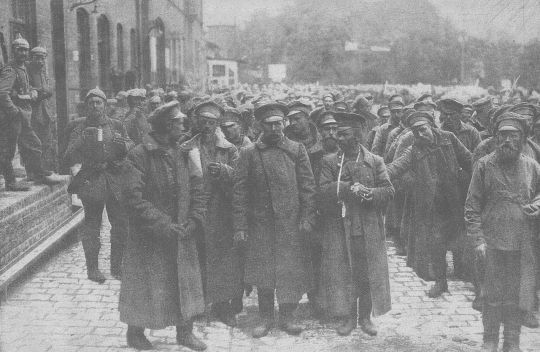
View On WordPress
4 notes
·
View notes
Text
Erich Ludendorff: The Military Leader Who Warned of Germany’s Doom
Erich Ludendorff was a prominent German general during World War I, a key strategist in Germany’s military operations, and an influential political figure in the turbulent years that followed. He played a central role in shaping the German war effort, particularly in the later years of the conflict, and was instrumental in the development of Germany’s total war strategy. However, despite his…

View On WordPress
0 notes
Text
International Response Clear: Drop It Down
[Associated Press]
[8th April 1925]
War generals throughout Europe have come forward to express their disillusionment with the militaristic culture of Europe, and have begun to demand for changes in culture via efforts from the League of Nations. From a series of exclusive interviews, including with General Erich Ludendorff of Germany, Douglas Haig, former commander of the British Expeditionary Force, and many others, who have affirmed their support for disarmament that was supported by Marshal Philippe.
In other news, during the promotion of Jean-Baptiste Dubois to Général de Corps d'Armée, or General of the Army Corp, his appointment speech sparked controversy and polarising reactions across the French public. He stated, “Europe has fallen into a dark, dark place following the Great War, and we better prevent a recurrence of it. The only way to do that is if we start reviewing our culture and build mutual trust to gradually start disarming. The way to rebuild our great country and reach peace and prosperity is not by invading other countries, but focusing on improving our internal state to reach purity.” This shockingly led to him being brought off stage, and the incident has raised genuine concern regarding disarmament throughout Europe.
0 notes
Text
Events 10.26 (before 1950)
1185 – The Uprising of Asen and Peter begins on the feast day of St. Demetrius of Thessaloniki and ends with the creation of the Second Bulgarian Empire. 1341 – The Byzantine civil war of 1341–1347 formally begins with the proclamation of John VI Kantakouzenos as Byzantine Emperor. 1377 – Tvrtko I is crowned the first king of Bosnia. 1520 – Charles V is crowned as Holy Roman Emperor. 1597 – Imjin War: Korean Admiral Yi Sun-sin routs the Japanese Navy of 300 ships with only 13 ships at the Battle of Myeongnyang. 1640 – The Treaty of Ripon is signed, restoring peace between Covenanter Scotland and King Charles I of England. 1689 – General Enea Silvio Piccolomini of Austria burns down Skopje to prevent the spread of cholera; he dies of the disease soon afterwards. 1774 – American Revolution: The First Continental Congress adjourns in Philadelphia. 1813 – War of 1812: A combined force of British regulars, Canadian militia and Mohawks defeat the United States Army in the Battle of the Chateauguay. 1825 – The Erie Canal opens, allowing direct passage from the Hudson River to Lake Erie. 1859 – The Royal Charter Storm kills at least eight hundred people in the British Isles. 1860 – Unification of Italy: The Expedition of the Thousand ends when Giuseppe Garibaldi presents his conquests to King Victor Emmanuel of Sardinia. 1863 – The Football Association is founded. 1871 – Liberian President Edward James Roye is deposed in a coup d'état. 1881 – Wyatt Earp and Doc Holliday participate in the Gunfight at the O.K. Corral in Tombstone, Arizona. 1890 – Malleco Viaduct in Chile, at the time "the highest railroad bridge in the world", is inaugurated by President José Manuel Balmaceda. 1892 – Ida B. Wells publishes Southern Horrors: Lynch Law in All Its Phases. 1905 – King Oscar II recognizes the dissolution of the union between Norway and Sweden. 1909 – Japanese occupation of Korea: An Jung-geun assassinates Japan's Resident-General of Korea. 1912 – First Balkan War: The Ottomans lose the cities of Thessaloniki and Skopje. 1917 – World War I: Brazil declares war on the Central Powers. 1918 – World War I: Erich Ludendorff, quartermaster-general of the Imperial German Army, is dismissed by Kaiser Wilhelm II for refusing to cooperate in peace negotiations. 1936 – The first electric generator at Hoover Dam goes into full operation. 1937 – Nazi Germany begins expulsions of 18,000 Polish Jews. 1942 – World War II: In the Battle of the Santa Cruz Islands during the Guadalcanal Campaign, one U.S. aircraft carrier is sunk and another carrier is heavily damaged, while two Japanese carriers and one cruiser are heavily damaged. 1944 – World War II: The Battle of Leyte Gulf ends with an overwhelming American victory. 1947 – Partition of India: The Maharaja of Kashmir and Jammu signs the Instrument of Accession with India, beginning the Indo-Pakistani War of 1947–1948 and the Kashmir conflict.
0 notes
Text
Name: Erich Ludendorff First Appearance: Wonder Woman the movie (2017) Portrayed by: Danny Huston Abilities: Command of the German army. Possession of a poisonous gas which is proof against any form of neutralization. Drug enhanced speed and strength.
Backstory: General for German forces during World War 1, Erich Ludendorff was a man willing to pay any price and spend any number of lives for the sake of victory.
Delighting in the wanton death toll and destruction, Erich would employ the efforts of Doctor ‘Poison’ Maru, in creating poisons which would shatter and destroy enemy forces, leaving vast swaths of death in his wake.
Slaying others within Germanys military command so that he may possess absolute power with none to question him, Erich wished to wipe out whole cities, ending the war by ensuring even the civilians on the enemy side were naught but corpses.
Erich Ludendorff would also be granted a conoction of Doctor Poisons invention which would enhance ones physical capabilities. Allowing him to perform feats of strength which were far beyond what mortal man was thought capable of.


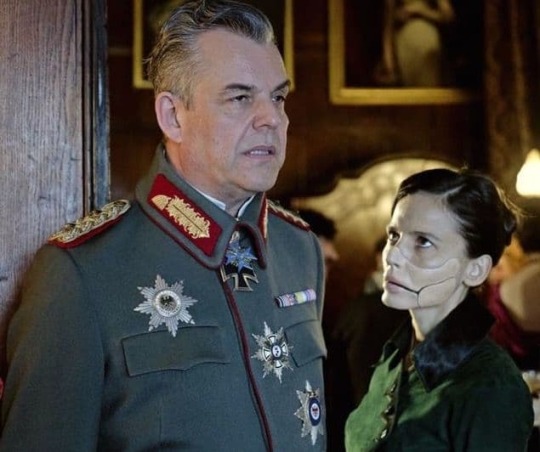
0 notes
Text
UPDATE 43 – THE EMPIRE HAS FALLEN

May 10 1917 News has arrived revealing the fall of the German Empire. Kaiser Wilhem II has been removed from power in a revolution by troops who have stormed the Hohenzollern Palace. The German Empire is now under a military junta led by a triumvirate consisting of General Erich Ludendorff, Admiral Eduard Von Capelle, and Foreign Minister Arthur Zimmermann.
0 notes